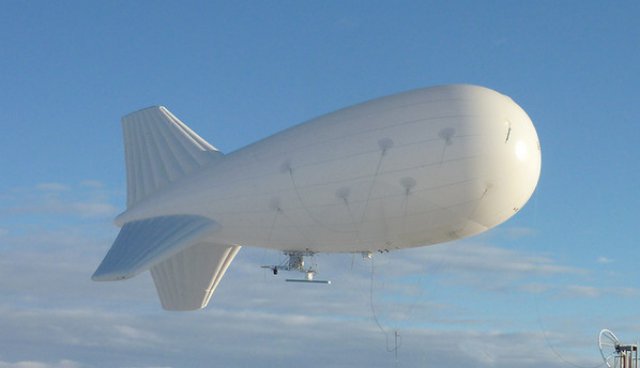 The Department of Rehabilitation and Corrections last week launched a $170,000 aerostat to monitor security at the Lebanon and Warren Correctional Institutions. The aerostat will have the capability to capture video of the prisons’ grounds during the day and night as well as use infrared sensors to detect unwelcome visitors staked near the facility’s fences.
The Department of Rehabilitation and Corrections last week launched a $170,000 aerostat to monitor security at the Lebanon and Warren Correctional Institutions. The aerostat will have the capability to capture video of the prisons’ grounds during the day and night as well as use infrared sensors to detect unwelcome visitors staked near the facility’s fences.
Testing, which will also examine the aerostat’s unique day and night cameras, will last until Oct. 7, Ed Voorhies, the managing director of Ohio’s prisons, told this news outlet. The security balloon is 15 feet in diameter and about a quarter the size of a hot air balloon, he added.
“We believe these vehicles and sensors can be useful,” Voorhies said. “There’s no denying, we’re trying to find ways to attack and prevent that external threat, which is ever increasing, (in our prisons).”
Starting in November, the prisons will test a series of different drones, sensors and cameras at the Lebanon and Warren facilities in collaboration with the Ohio/Indiana UAS Center. The testing is expected to last at least 120 days, Voorhies said.
Three different types of unmanned aircraft will be tested for roughly 30 days each starting in November. First, the aerostat, or tethered balloon, will get another trial. Then, prison officials will test out a helicopter system, which can take off both inside the prison facility and outside on the grounds. A fixed-wing aircraft will also be given a test run.
Different sensors and cameras will be used in each of the drones during the testing period.
Once testing is completed, prison officials will decide if they want to proceed with drone use on prison grounds and, if so, which drones they’d like to use to monitor the prisons.
“We’re generally going to be conducting a cost-benefit analysis to determine if and what type of security we’re going to use,” Voorhies said of the drones.
The aerostat was bought and paid for in May by the Ohio Department of Transportation, which is overseeing operations at Ohio’s Unmanned Aerial Systems Center. Prison officials were unable to provide cost estimates for the six-month drone testing project slated to begin in November because the transportation department is in the process of collecting cost and project proposals.
Drones could become of statewide interest for other government agencies in coming years, said Steve Faulkner, a spokesman for the transportation department.
“These devices can be used for a number of different type of things,” Faulkner said. “We shouldn’t rule out the possibility that during a national disaster such a device can be used to aid emergency personnel.”
Unmanned aircraft are currently banned from commercial use, but the Federal Aviation Administration permits government agencies to use the devices.
Prison workers will be tasked with surveying the aerostat’s cameras. The aerostat testing will also determine if the technology can watch both the Lebanon and Warren facilities at once and how far off prison grounds the device is capable of seeing.
The drone’s line of vision is a concern for the American Civil Liberties Union of Ohio, Gary Daniels, a spokesman for the organization, said. Daniels said the ACLU isn’t against drone use, but the organization wants to see state legislation that will tell government agencies how they can use or store images of private properties, for example.
